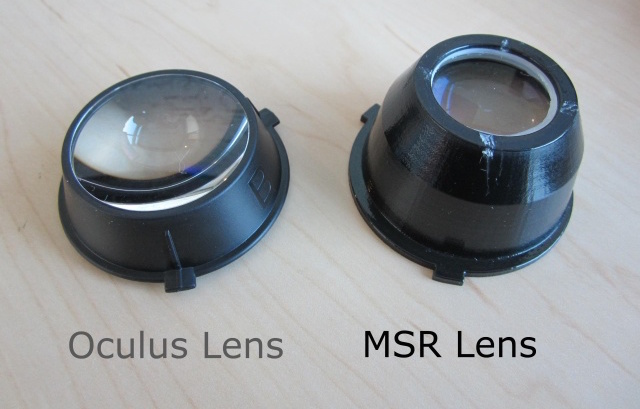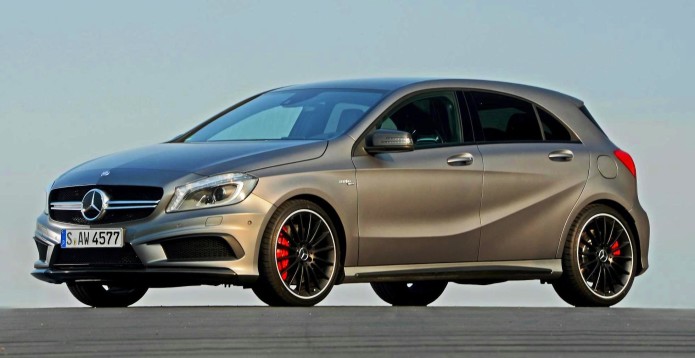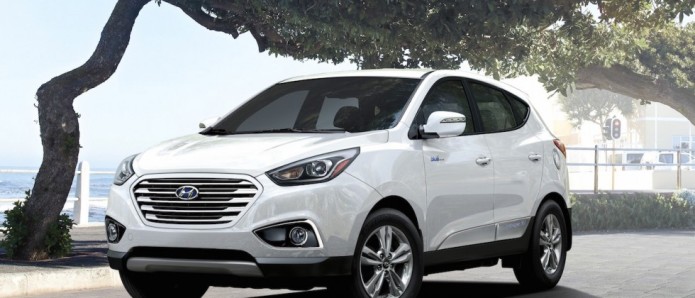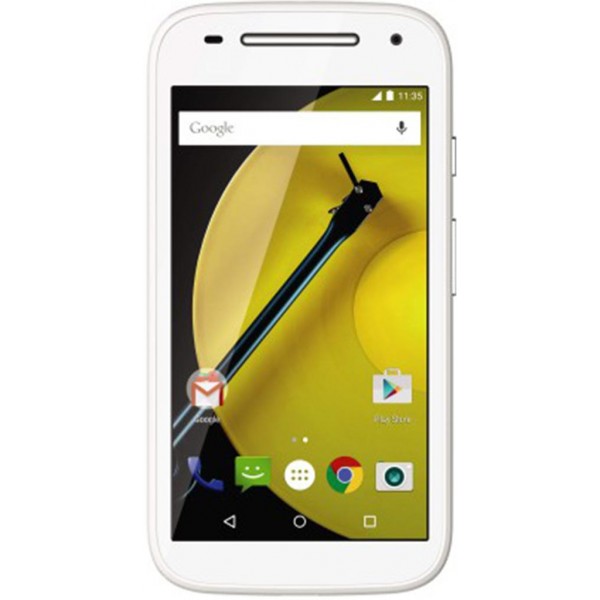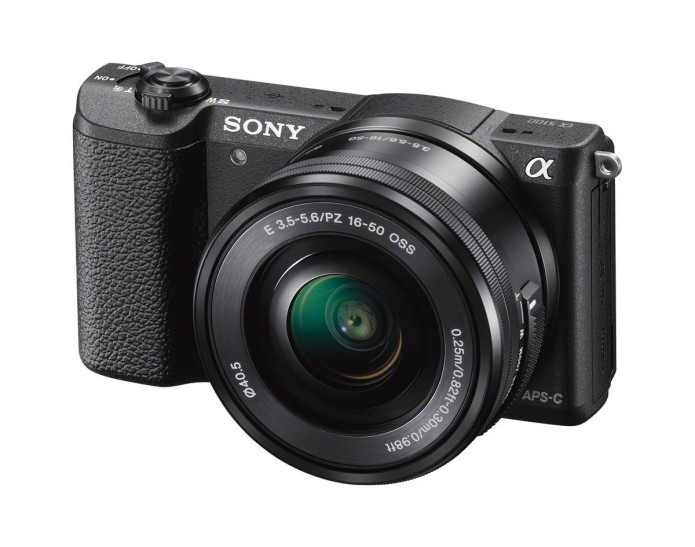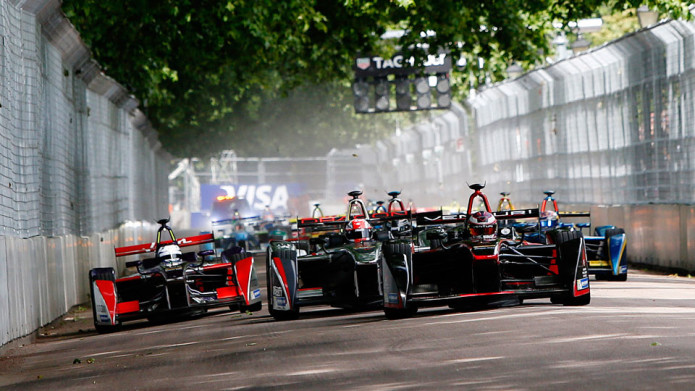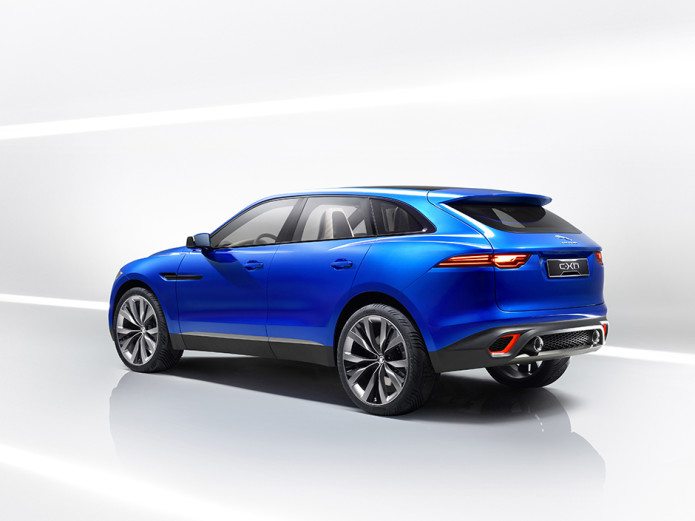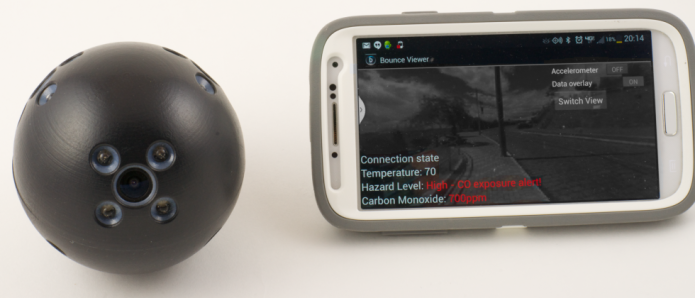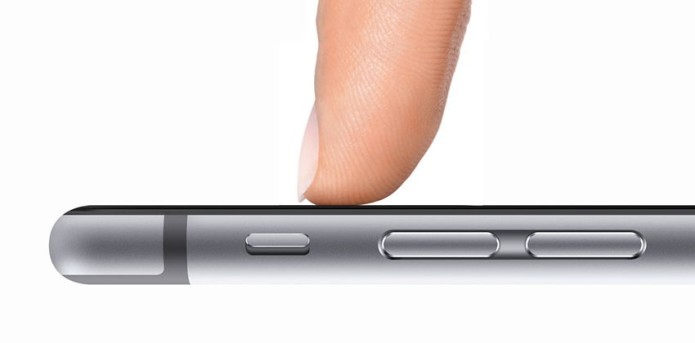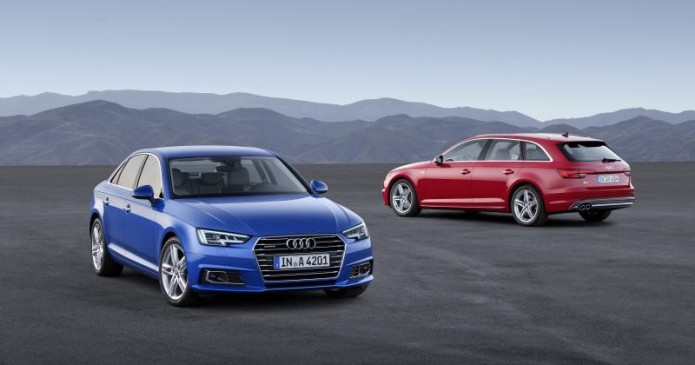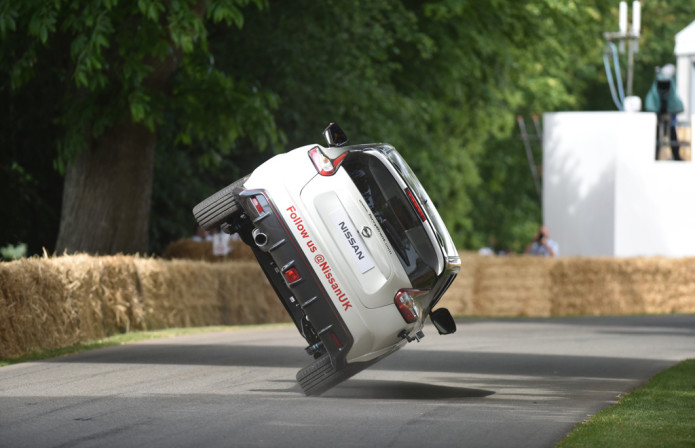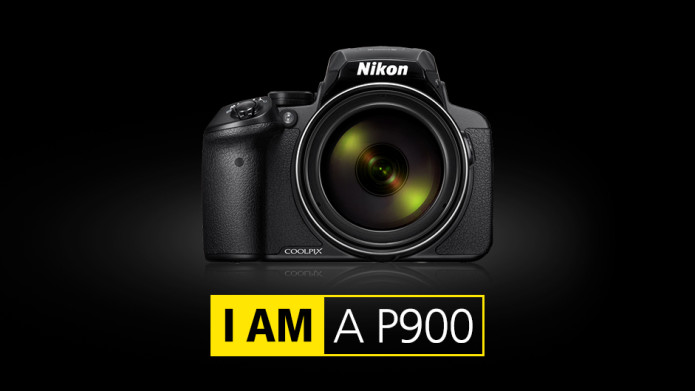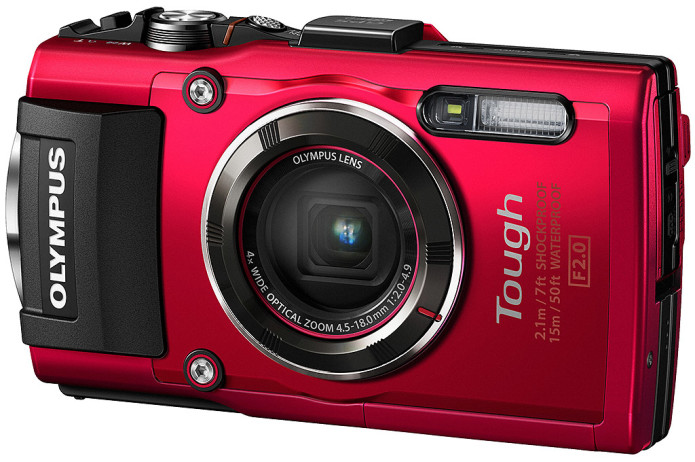Paypal has announced that it is clearing up the wording in user agreement after being called out the FCC for illegal practices violating consumers privacy with the potential for invasive robocalls. Users worried that the because the text in the user agreement indicated they would be subjected to robocalls, that PayPal could be selling the personal data to external call lists. The previous language made it seem as though PayPal was violating the Telephone Consumer Protection Act.
…
Read full post here:
https://www.slashgear.com/paypal-rewords-user-agreement-after-robocall-criticism-30391035/
Monthly Archives: June 2015
Microsoft has just improved the Oculus Rift’s lenses
At E3 earlier this month it became apparent that Microsoft andOculus have developed quite the buddy-buddy relationship, with the latter’s Rift VR headset being compatible with both the Xbox Oneand Windows 10. Since the companies are good friends now, Oculus shouldn’t take offense that Microsoft has developed a better lens for the Rift, offering a sharper image and less chromatic aberration. The design comes from the Microsoft Research group, and offers a decent improvement over the Oculus Rift DK2.
…
Read full post here:
https://www.slashgear.com/microsoft-has-just-improved-the-oculus-rifts-lenses-29390949/
LG introduces performance boosting hexagonal smartwatch batteries
LG Chem, a branch of LG, has its sights on moving up the ranks of the small-battery market which feeds the smartwatch and wearables industry. The company already claims to have the number one spot in the medium to large-sized battery market. It hopes to top the competition by releasing an innovative, hexagonal battery for smartwatches with circular faces such as the Moto 360 and LG’s own G Watch R and Watch Urbane.
…
Read full post here:
https://www.slashgear.com/lg-introduces-performance-boosting-hexagonal-smartwatch-batteries-30391032/
HP goes back to school with convertibles, Chromebook
School may just be ending but it’s never too early to prepare for the next academic year, especially when it comes to purchasing a new laptop. To make things easier, or perhaps even more difficult, HP is announcing its own batch of PCs designed with students and teachers in mind. Or maybe “re-labeled” might be a better term, as the HP Spectre Pro x360 G1, the HP Pro x360 310 G2, and the HP Chromebook 11 G4 are practically minor updates or even rehashes of existing HP products.
…
Read full post here:
https://www.slashgear.com/hp-goes-back-to-school-with-convertibles-chromebook-30391075/
Mercedes A45 AMG bumped to 381hp
Mercedes has massaged the A45 AMG hatchback to get even more power from its 2.0L 4-cylinder engine. In fact, the 381hp output for the four-banger turbo makes the engine the most powerful 4-cylinder around. The power bump grabs the most powerful four title away from Audi (who took it from Mercedes) dethroning the Audi RS3.
…
Read full post here:
https://www.slashgear.com/mercedes-a45-amg-bumped-to-381hp-29390924/
Hyundai missed its fuel-cell target massively, but it’s not giving up
Electric and hybrid cars may be most peoples’ first thought when it comes to green travel, but Hyundai isn’t letting underwhelming sales sour it on fuel-cells. After a year of sales, the company has sold or leased a little more than a quarter of the hydrogen-powered Tucson EV it hoped to, with just 273 cars reaching drivers since production began in 2013. Although that’s well short on its 1,000 target, Hyundai maintains that fuel-cells have more potential for the company than electric cars, though its logic may be a little skewed.
…
Read full post here:
https://www.slashgear.com/hyundai-missed-its-fuel-cell-target-massively-but-its-not-giving-up-29390944/
Study says HUDs could make driving more dangerous
Head up displays, more commonly called HUDs, put digital images on a driver’s windshield so they can see data — speed or navigation instructions, for example — without having to take their eyes off the road. The common thought process has been that this technology makes driving safer — eyes are always forward, and devices like smartphones are tucked out of sight. A new study from the University of Toronto, however, indicates otherwise — rather than improving safety, HUDs could actually make drivers more dangerous by meddling with their attention.
…
Read full post here:
https://www.slashgear.com/study-says-huds-could-make-driving-more-dangerous-29390990/
Google Translate gets more conversational
Google Translate is notorious for spewing out either oddly worded or overly formal results, but the company says it’s getting better thanks to people’s help. Mountain View’s online translator is now more adept at figuring out informal speech — for instance, it can tell if you want to ask “Is everything alright?” when what you’ve typed in has another more literal translation, as you can see below the fold. That’s all made possible by the volunteers who spend time translating phrases and checking the quality of other people’s submissions on the Translate community website.
…
Read full post here:
https://www.engadget.com/
Shazam shows you the music artists are discovering
The ability to follow your favorite music artists on Shazam isn’t new, but that feature is now getting a huge boost. Starting today, the service will let you see how entertainers are using Shazam to discover tunes, too. Because famous people — they’re just like us. With the refreshed iOS and Android apps, you’ll start seeing the option to follow hundreds of artists, including Alicia Keys, Coldplay, Enrique Iglesias, Pitbull and Shakira, and view the music any of them are identifying through Shazam. Better yet, you can listen to these songs directly from the application. Don’t expect artists to make everything they try to recognize public, though, since there is an option to keep guilty pleasures (or blunders) private.
…
Read full post here:
https://www.engadget.com/2015/06/29/shazam-artist-music-discovery/
Samsung is launching ‘several’ more Tizen smartphones this year
It’s tempting to think of Tizen as an also-ran in the smartphone world next to powerhouses like Android and iOS, but that’s not entirely true when Samsung has sold 1 million Z1 phones in India since January. In fact, there are now signs that the Korean firm is doubling down on its partly in-house platform: Reuters sources hear that Samsung is planning to release “several” more Tizen phones later this year at a range of prices. While there aren’t more details yet, the move suggests that Samsung is confident that it can expand Tizen’s audience relatively quickly.
…
Read full post here:
https://www.engadget.com/2015/06/29/samsung-releasing-more-tizen-phones-in-2015/?utm_source=Feed_Classic_Full&%3Butm_medium=feed&%3Butm_campaign=Engadget&%3B?ncid=rss_full
iPhone 8-years on: what’s next for Apple’s flagship?
Eight years ago Steve Jobs introduced the iPhone to the world, and the world changed. Apple didn’t invent the smartphone, but they certainly started the craze. Eight years on, we’re having a look at how this quintessential smart device has evolved – where it’s been, what it’s meant to the industry, and where it’s about to go. As always, the next step is the most important for us. Once the newest phone is in your hands, it’s time for the next one. What’s left for Apple to do to the device that changed the way they did business?
…
Read full post here:
https://www.slashgear.com/iphone-8-years-on-whats-next-for-apples-flagship-29390989/
Moto G 3rd gen surfaces in retail shots
We’ve seen shots of the upcoming third generation of the Moto G a few times now, but this latest leak — assuming the shots are legit — gives us our best look at them thus far. They are press images, likely the same shots we’ll be seeing show up on retailers’ websites in the near future. The same oblong rear camera design is present as well as the familiar Moto G dimple. The handset hasn’t yet been announced, but the increasing leaks and sightings hint at an upcoming launch.
…
Read full post here:
https://www.slashgear.com/moto-g-3rd-gen-surfaces-in-retail-shots-29391040/
Sony A5100 Review
Early in 2014, Sony knocked the ball out of the park with theSony A6000 compact system camera, one of the most popular models we’ve seen in years. Now, it gives that camera a younger sibling in the form of the Sony A5100, and it will clearly be hoping to repeat its success.
Although its name might suggest it to be a followup to the A5000, the 24.3-megapixel Sony A5100 actually replaces the NEX-5T, the final Sony camera to sport the now-retired NEX badge. As such, the A5100 will sit in between the existing A5000 and A6000, replacing neither, but providing an alternative to both.
…
Read full post here:
https://www.imaging-resource.com/
Canon S120 Review — Now Shooting
The Canon S120 is here, and it seems Canon was listening to us when they made it. A followup to the Canon S110 which we reviewed in March of last year, the PowerShot S120 looks to answer at least half of our main concerns about the earlier model.
The 12.1-megapixel Canon S120 retains a pocket-friendly body very similar to that of its predecessor. As with that model, it’s aimed at enthusiasts who want a larger sensor than the typical compact, but who don’t need all the bells and whistles of a G-series camera. Changes include a new image sensor, brighter lens, faster DIGIC 6 image processor, higher-res LCD, refined Wi-Fi feature set, new battery pack, and slightly better battery life. The PowerShot S120 also has a brand new body with a dual-textured front panel, and a slightly smaller rear thumb grip.
…
Read full post here:
https://www.imaging-resource.com/PRODS/canon-s120/canon-s120A.HTM
Here’s how Google checks for lag on your Android phone
Yes, Google hates lag on smartphones as much as you do — enough so that the search giant has a robot dedicated to spotting that delay between your finger input and what happens on screen. Meet the Chrome TouchBot, an OptoFidelity-made machine that gauges the touchscreen latency on Android and Chrome OS devices.
…
Read full post here:
https://www.engadget.com/2015/06/28/google-chrome-touchbot/
Facebook wants to give your photo uploads a Snapchat-like flair
Facebook may be not as in tune with the teen crowd as Snapchat, but that isn’t stopping it from trying to fit in. TechCrunch has discovered that Facebook is testing an iOS photo uploader that lets you overlay Snapchat-like filters, stickers and text on pictures as you post them.
…
Read full post here:
https://www.engadget.com/
Formula E’s first season of electric racing comes to a close
After several months of occasionally intense competition, Formula E’s first season of all-electric racing is over. Virgin Racing’s Sam Bird has won the second race of the London ePrix, while NEXTEV TCR’s Nelson Piquet managed to do just well enough (seventh place) to win the overall driver’s title by a single point. Not that Piquet’s chief rival, Sebastien Buemi, is about to cry — he secured the team title for E.dams-Renault after winning the first London race on June 27th.
…
Read full post here:
https://www.engadget.com/2015/06/28/first-formula-e-season-ends/
Apple Music will play on Sonos speakers by the end of the year
When Apple Music showed up, one of the biggest questions was whether or not it would get at least the same level of third-party hardware support as Beats. Will you have to chuck your Sonos speakers in favor of some Apple-blessed streaming audio gear? Not at all, apparently. The team at 1 Infinite Loop says that Sonos devices will play Apple Music by the end of this year — “ASAP,” as the iPhone maker’s Ian Rogers puts it. There’s no word of compatibility other hardware, but it’s evident between this and Android supportthat Apple is more interested in having a Spotify-like ubiquity than locking you into its ecosystem.
…
Read full post here:
https://www.engadget.com/2015/06/28/apple-music-sonos-support/
Jaguar F-Pace teased on video
Jaguar has made no secret that it has a new crossover SUV in the world the new SUV will be called the F-Pace and it will be based on the design on the sexy C-X17 concept SUV. the official unveil for the F-Pace is coming in Frankfurt and until that official unveil all we have to go on are spy shots and a video offered up form Jaguar to show us what the crossover is all about.
…
Read full post here:
https://www.slashgear.com/jaguar-f-pace-teased-on-video-29390920/
Stormtrooper helmet bluetooth speaker goes on sale in time for ‘Force Awakens’
With the December 18th release date of Star Wars: The Force Awakens less than six months away, now is the perfect time to start rolling out the merchandising tie-ins. While not directly connected with the new movie, one item that might be of interest to music fans is this bluetooth speaker in the form of a Stormtrooper’s helmet. The speaker comes from UK-based outlet The Fowndry, known for a number of geek-related goods, and will go on sale in October.
…
Read full post here:
https://www.slashgear.com/stormtrooper-helmet-bluetooth-speaker-goes-on-sale-in-time-for-force-awakens-29390931/
Nokia’s Android future to be built by Foxconn
Nokia fell from some lofty heights when it went from being the most popular mobile phone maker in the land to having a hard time competing in the smartphone world. Ultimately, Nokia ended up in an agreement with Microsoft that prevented it from building any smartphones of its own for a time. Once that agreement with Microsoft ends, Nokia has said that it will be back to making smartphones and we have heard in the past that the smartphones will be powered by Android.
…
Read full post here:
https://www.slashgear.com/nokias-android-future-to-be-built-by-foxconn-29390911/
Xiaomi isn’t in a hurry to brings its phones to the US
It seems that it will be some time before we see Xiaomi perform its sales and marketing magic in the US. Perhaps disappointing fans, Hugo Barra, former Google exec and now Xiaomi’s VP for its international thrust was, somewhat ironically, the bearer of sad international news. Barra hinted that, while the company is of course interested in leaving its mark in the US, it doesn’t have an aggressive schedule to do so, content to make its presence felt through accessories and toys while waiting for the US market to become ripe for the picking.
…
Read full post here:
https://www.slashgear.com/xiaomi-isnt-in-a-hurry-to-brings-its-phones-to-the-us-29390870/
Sony E5663 could be the Xperia Z4 Compact
It is hard to fathom Sony’s mind these days, which makes it difficult to discern its gameplay when mobile devices are involved. TheXperia Z4/Z3+ was, to put it mildly, somewhat of a disappointment. It seems, however, that the Japanese manufacturer might have a device that could offset that blunder. A certain E5663 has appeared in GFXBench’s listings and though it might be intended to launch in India, at least initially, signs point to what could possibly a noteworthy successor to the Xperia Z3 Compact pictured above.
…
Read full post here:
https://www.slashgear.com/sony-e5663-could-be-the-xperia-z4-compact-29390873/
Bouncing tactical camera lets police peer safely into dangerous rooms
First responders and law enforcement officers often encounter dangerous obstacles on the job. They can’t see through walls, but a new bouncing camera can be thrown into a dangerous situation to give officers a clear understanding of where any hostages or gunmen are located.The “tactical spheres” house a six-lensed camera that can record surroundings and stitch them into a single photo which is then sent to a responding officer’s smartphone. The ball is also equipped with temperatures and carbon monoxide sensors.
Dubbed, The Explorer, this ball camera is created by Bounce Imaging which was founded by MIT alum Francisco Aguilar. He came up with the idea after learning that search and rescue teams in the 2010 Haiti earthquake were having trouble searching for survivors in the debris.
…
Read full post here:
https://www.slashgear.com/bouncing-tactical-camera-lets-police-peer-safely-into-dangerous-rooms-29390854/
Apple starts production of Force Touch enabled iPhones
It seems that Apple has decided to start the production of its expected new smartphones early. Insider sources have revealed that the company has just gotten the ball rolling in making the nextiPhones and have also revealed the one major feature that will set it apart from its predecessors. Confirming earlier rumors, these iPhone 6S and iPhone 6S Plus, as they are believed to be called, will feature Apple’s fancy new Force Touch feature, bringing pressure sensitivity to a larger screen and to a larger scale of devices.
First debuting in the Apple Watch and the new MacBook’s tochpad, Force Touch basically adds an element of pressure sensitivity to those surfaces. In practice, this means that the hardware can read different levels of pressure exerted by a user’s finger and behave differently based on that, with a light touch initiating a simple click while a firmer tap doing a right-click, for example.

On a touchscreen the size of an iPhone, however, that could be taken a lot further. In early 2014, a patent filed by Apple revealed its plans to have pressure sensitive screens and this could very well be the fulfillment of those plans. One application would be to partly emulate the capabilities of pressure sensitive styluses like those from Wacom or Adonit without the need for specialized instruments or Bluetooth. It can also extend the range of available gestures to control the smartphone, varying in the degrees of pressure applied.

That said, Force Touch may be the only, if not one of the extremely few, features to differentiate this upcoming generation of iPhones from the current batch. The newer models are expected to still sport the same 4.7-inch and 5.5-inch sizes of the iPhone 6 and the iPhone 6 Plus. According to sources, the design of the devices will be exactly the same.
Despite the similarity in size and structure and the early start, the novelty of Force Touch touchscreen displays could still put a damper on production so an early launch of the iPhone 6S and 6S Plus is still out of the question.
(slashgear.com)
iOS 9 to upgrade iTunes Match limit to 100,000 songs
As Apple Music, Apple’s new streaming audio service, is about to debut tomorrow with the launch of iOS 8.4, Senior VP Eddy Cue has answered a few question on Twitter about existing features will integrate with Music, namely iTunes Match. In its existing form, iTunes Match lets users upload up to 25,000 of their own songs that aren’t available in the company’s library to the cloud for streaming at any time. Cue has confirmed that this feature will continue to exist inApple Music, and upon iOS 9’s release this fall, the limit will be raised to 100,000 songs.

Cue made it clear that all subscriptions to Apple Music will include the feature of iTunes Match, but it just won’t be referred to by that name. Apple Music will continue to match any songs already purchased through iTunes, making them available for streaming, as well as let users upload songs that aren’t available in the Music catalog, even if they’re purchased from another source.

When Apple Music launches on June 30th, the service will users to upload up to 25,000 of their own songs, which is the same limit as iTunes Match had. Cue also tweeted that they working to have that increased to 100,000 songs when iOS 9 is released later this year.
For those who will be migrating to Apple Music from the existing Beats Music service, Cue said the transition should be painless. There will be an update to the Beats app that will help users move their playlists to Apple Music. However, it’s still unknown if those users will start Apple Music on the three-month free trial, or if they will automatically start on a paid subscription.
(slashgear.com)
Audi A4 and A4 Avant pulls out all the hi-tech stops
A little over a month ago, Audi revealed its market timetable for its new generation of cars and true enough, the Audi A4 and its spacious sibling, the A4 Avant, are more than ready to hit the road. But more than just an incremental improvement over the A3, the Audi A4 represents the pinnacle of Audi’s integration of automotive technology. From virtual cockpits to intelligent driver assistance systems to gesture-based tailgate controls, the Audi A4 and A4 Avant are filled with technology that will make your driving life easier and safer while making your head spin.
To say that the Audi A4 is loaded with technology would be an understatement that it’s hard to decide where to start. So let’s start with the simplest, a feature exclusive to the A4 Avant. An optional sensor can be installed that will let owners open and close the tailgate with a swiping gesture of the foot. It may sound almost inconsequential, but it demonstrates Audi’s attention to the tiniest detail when it comes to employing technology to ease the life of its customers.
[su_slider source=”media: 9201,9202,9203,9204,9205″ height=”400″ title=”no”]DJI Phantom 3 sample shots[/su_slider]
The Audi A4 is equipped with the latest in driver assistance system, most of which come as optional packages or individual add-ons. The Audi pre sense city, however, is a standard feature on both Sedan and Avant models, using a windshield-mounted front camera to scan the road ahead and, if necessary, apply the brakes to prevent collision. The Tour assistance package introduces the Adaptive Cruise Control or ACC, which uses two front radar sensors in addition to the camera to set a safe distance between cars. The City assistance package, on the other hand, uses two rear radars in assisting changing of lanes as well as warn about fast approaching vehicles. In the latter case, the system lights up the warning LED in the appropriate rear view mirror’s housing to call the driver’s attention.
Moving inside, we come across what is perhaps Audi’s greatest innovation in terms of in-vehicle infotainment systems. The optional virtual cockpit marries the latest in display, navigation, and automotive technology to deliver a seamless and safe driving experience, whether you are looking for your next turn or carefully observing your lane. The MMI infotainment system, a mainstay of Audi’s modern cars, is not to be outdone, especially when equipped with the optional MMI Navigation and MMI Touch features.

The controls are particularly interesting. The rocker switches that line up are all touch-sensitive so that when a finger merely touches it, the appropriate function is enlarged and highlighted on the LCD display. The rotary controller, which is the core control element of the MMI, features a touchpad on its top surface for input and multi-finger gestures.

With all the technology involved, you might think that it detracts from the Audi A4 as a car but that couldn’t be farther from the truth. The new A4 and A4 Avant are impressive both inside and out. Although it is wider, bigger, and more spacious than ever before, Audi pulled off a manufacturing miracle and made them also lighter, up to 120 kg lighter depending on the engine. As to those engine, Audi is providing a plethora of choice, 7 in total, ranging from three TFSI and and four TDI engines, all boasting of fuel efficient, eco-friendliness, and quiet purring.
[su_slider source=”media: 9210,9209,9208,9207,9206″ height=”400″ title=”no”]DJI Phantom 3 sample shots[/su_slider]
The new Audi A4 and Audi A4 Avant will be available in Germany starting Fall this year. The standard configuration is already quite competitive, starting with xenon headlights, keyless go, Bluetooth connectivity, Audi drive select, and a standard MMI 7-inch display. Keep your eyes peeled on this one as SlashGear will get a sneak preview of the cars in Ingolstadt next month.
[su_youtube url=”https://youtu.be/ZgCDQ6DxRwc”]
(slashgear.com)
Nissan Juke Nismo RS sets 2 wheel mile-long driving record
We usually hear and write about cars that set the record straight when it came to speed, performance, eco-friendliness, and other normal metrics, but there are just some stunts that defy odds and rationality. Take for example driving on only two wheels on the same side, something that no car was designed to do. And yet that is exactly what the Nissan Juke Nismo RS did at the Goodwood Festival Speed this weekend, setting a new world record for the fastest mile-long drive on two wheels. Without toppling over, of course.

The Juke NISMO RS is built for speed, with the a Gran Turismo class engine purring underneath the hood. But on that fateful day, it was not the raw power of the car that was put to the test. It was the quality of its build and its resilience in absurd driving conditions that gave the public reason to give applause.

Apparently, there was already a world record for the fastest driving on two wheels for a mile. That was set in 2011 by stunt driver Terry Grant. Lo and behold, the very same driver set to break his own world record, this time using a Juke Nismo RS to make the seemingly impossible possible. A drive of 2 minutes and 10 seconds, more than half a minute faster than the 2011 record.
[su_youtube url=”https://youtu.be/keiUSSCeGdc”]
Granted, the Goodwood track isn’t exactly the longest, given it’s only 1.16 miles. But here we’re talking about a small crossover, driving at speed and on only two wheels, navigating a course that curves and twists. That is definitely no small matter and worthy of praise and a new record.
(slashgear.com)
Nikon COOLPIX P900 Review
Oh, a 30x travel zoom? That’s cute. A 50x superzoom? Hmm, quaint. A DSLR with an 800mm lens? A 1200mm lens? How’s your back? All of these zoom cameras and telephoto lenses pale in comparison to Nikon’s latest creation, as they take the all-in-one superzoom category to the next level, following closely on the heels of the recently announced P610 60x zoom camera, with the introduction of the Nikon Coolpix P900.
Indeed, the new Nikon P900 goes way beyond the standard 50-65x superzoom category with a new, massive 83x optical zoom lens. Yes, optical. This means a lens that reaches as far as 2000mm(!) in 35mm-equivalence. And if for some reason 2000mm just doesn’t cut it, the P900 offers a total maximum equivalent of a whopping 8000mm when you factor in full 4x digital zoom (or 4000mm equivalence with Nikon’s 2x Dynamic Fine Zoom)!
In all seriousness, though, having a powerful and versatile zoom capability on your camera — especially telephoto reach — is an attractive feature for many people. Long telephoto lenses and powerful zoom cameras allow you to capture a variety of subjects, such as wildlife and sports, that could otherwise be very difficult or even potentially dangerous if you had to get physically closer with a shorter lens. High-powered superzoom cameras — those with optical zoom lenses around in the 40-60x magnification have maintained a steady popularity in the marketplace with those looking for an all-in-one camera solution with a extremely versatile lens, and the new P900 is the next evolution in this popular, versatile camera category.
With a lens this powerful, reaching to never-before-seen magnifications in a compact, fixed-lens digital camera, it’s not surprising that the Nikon P900 is far from a svelte, pocketable camera. The lens is absolutely massive — especially when zoomed in to 83x — however, in a very brief hands-on with a sample unit, the camera still felt very comfortable to hold and relatively lightweight, which the specifications indicate to be just shy of two pounds (or around 900g) with battery and memory card included.
Not only does the lens provide an enormous amount of zoom range, it’s also quite bright, especially at wide angle. With a 24mm-equivalent focal length at the widest, its aperture is a bright f/2.8, which is a nice step up from the f/3.3 aperture offered at the P610’s widest, 24mm-equivalent focal length. As you zoom, though, the maximum aperture of the P900’s lens falls to rather dim f/6.5, which isn’t unexpected for such a long zoom lens in a relatively compact design. The lens configuration makes use of aspherical and ED elements, including a single Super ED element, which help reduce chromatic aberrations and other optical abnormalities.
As lenses get longer and longer, having of some form of image stabilization becomes more and more crucial. Keeping shots blur-free or even just maintaining a view on your subject at full telephoto — especially at 83x in this case — can be difficult without stabilization. Thankfully, Nikon has introduced an impressive, all-new VR system for the P900. The new Dual Detect Optical VR system, which utilizes accelerometers in the lens as well as analyzing image motion on the sensor, provides a claimed five stops* of stabilization — the highest level vibration reduction ever included in a Nikon Coolpix camera.
Behind the powerful lens, the P900 sports a 16-megapixel 1/2.3-inch type CMOS sensor. Standard ISO range starts at a base sensitivity of 100 and rises to a maximum of 1600 in scene or other automatic shooting modes. The P900 does include full PASM exposure modes for more advanced shooting, and within those modes, ISO range is increased to 3200 and 6400. There is also a special boosted Hi 1 setting for ISO 12,800, however this is reserved solely for a High ISO Monochromatic special effects mode.
Like its less expensive sibling, the P610, the new P900 is able to fire off a burst of seven still images at up to seven frames per second at full resolution. According to Nikon, shooting lag for single-shot performance is approximately 0.12 seconds at the wide-end and 0.75s at full telephoto, which makes the P900 quick and speedy to handle fast-paced shots one after another. As with Nikon’s other superzoom cameras, they keep things simple on the P900 with only JPEG image recording; no RAW support, unfortunately.
For video, the Nikon P900 offers a standard, modern set of features including Full HD recording (1920 x 1080) at 60 frames per seconds, as well as 30fps (or 50p and 25p in PAL mode). 720p resolution is also available at 60p/30p (50p/25p) as is a neat slow-motion video mode that captures at up 120 frames per second at VGA (640 x 480) resolution. Videos are recorded using the H.264 standard in an MPEG-4 container with stereo audio.
As with many of the Nikon’s recent cameras, the new P900 includes both Wi-Fi and NFC connectivity for use with Nikon’s Snapbridge smartphone companion app. The Nikon P900 allows for wireless transfer of images for quick and easy sharing or mobile post-processing, however the Snapbridge app can also be used as a wireless remote control for even more creative possibilities. (Nikon’s optional ML-L3 infrared remote is also supported.) The Coolpix P900 also includes a built-in GPS to geo-tag your photos during your travels.
The Nikon P900 is scheduled to be available in April 2015 for a estimated retail price of US$599.95 and will come in black.
Now that we’ve had an overview of the camera, let’s take a closer look at the design and physical features of the new Nikon P900…
Walkaround
The Nikon P900 takes style cues from existing superzoom cameras with a large, protruding lens paired with a DSLR-esque body design with fuller, extended hand-grip and a variety of external buttons and control dials. However, in the case of the P900, the lens is definitely front-and-center; taking up a huge proportion of the camera’s overall size and shape.
Starting from the top-view, you can see just how massive the lens assembly is in comparison to the rest of the camera. The lens barrel does, however, provide substantial real estate for a balanced, secure grip.
In terms of top-deck controls and dials, the P900 follows very closely to that of the new P610, with the majority of camera controls clustered around the handgrip. Out front, on the contoured handgrip, the zoom rocker lever surrounds the shutter release button, and behind that sits a function button and the on/off button. Like a DSLR, the P900 features a main command thumb dial for quick and easy settings adjustments. The mode dial, with PASM modes and an array of scene modes, presets and special effects modes, is placed next to the side of the EVF housing. And sitting on top of the EVF itself is a built-in pop-up flash as well as left and right microphones for stereo audio capture and the covering of the GPS unit. Unfortunately, like the P610, there’s no hot shoe for mounting an external flash.
Moving to the back side of the camera, again we see a very similar control layout and design to that of the P610 superzoom. The primary control is the 4-way, rotational dial cluster as well as your typical assortment of buttons, including menu, delete, and playback buttons. The camera also features a Wi-Fi shortcut button to quickly setup and connect to a smart device, a video record button — conveniently placed right next to the textured thumb-rest area — plus the display information and LCD/EVF toggle buttons.
Also on the rear of the camera is a large, 3.0-inch, 921K-dot RGBW vari-angle LCD screen complete with anti-reflective coating and 6-level brightness adjustment. The EVF also shares the same 921K-dot resolution, and includes diopter adjustment and a built-in eye/proximity sensor to automatically activate the EVF when placed up to the eye.
Along the sides of the camera, you get another view of just how dominating the lens on the P900 is. On the left side of the camera, the body itself lacks any buttons or controls, except for the pop-up flash button. However, on the left side of the lens barrel, there’s a secondary zoom toggle switch as well as “snap-back” zoom button. The side zoom toggle button helps maintain a secure grip and control camera shake while providing a convenient thumb-controlled way to zoom the lens. The snap-back zoom button helps re-frame or reacquire your subject, which can be difficult when composing a shot at long telephoto focal lengths. The snap-back button quickly zooms back out to a full wide-angle view and then snaps back to the previous focal length once you’re ready and you let go of the button.
The right side of the camera and lens is devoid of any switches or controls, except the covering for the USB and Type-D Micro HDMI ports as well as the proximity connection area for the NFC chip.
Like the right side, the front view is quite simple. The handgrip area and left front edge covered in a grippy, rubberized material for a comfortable and secure grip. On the front, in the crux of the handgrip and lens is the small self-timer lamp.

For power, the Nikon P900 shares the same rechargeable EN-EL23 lithium ion battery pack as the P610, which is CIPA-rated for this camera to provide about 360 shots per charge. The camera is also compatible with the EH-67A AC Adapter (sold separately) for tethered, constant power. For storage, the P900 uses Secure Digital flash memory cards and is compatible with SD, SDHC and SDXC cards.
| Basic Specifications | |
|---|---|
| Full model name: | Nikon Coolpix P900 |
| Resolution: | 16.10 Megapixels |
| Sensor size: | 1/2.3 inch (6.2mm x 4.6mm) |
| Kit Lens: | 83.00x zoom (24-2,000mm eq.) |
| Viewfinder: | EVF / OLED |
| Native ISO: | 100 – 6400 |
| Extended ISO: | 100 – 12,800 |
| Shutter: | 15 – 1/4000 |
| Max Aperture: | 2.8 |
| Dimensions: | 5.5 x 4.1 x 5.4 in. (140 x 103 x 137 mm) |
| Weight: | 31.7 oz (899 g) includes batteries |
| MSRP: | $600 |
| Availability: | 04/2015 |
| Manufacturer: | Nikon |
| Full specs: | Nikon P900 specifications |
(imaging-resource.com)
Olympus TG-4 Review
Olympus brings the follow-up to last year’s rather fun and impressive TG-3 waterproof/rugged camera with the appropriately named Olympus TG-4. With altogether unchanged exterior styling and control scheme however, the improvements to this year’s model are all under the hood, with new scene modes, faster GPS, and a big feature that’s sure to please many enthusiasts: RAW capture.

Indeed, the Olympus TG-4 is not only Olympus’ first, but also the industry’s first rugged, waterproof compact camera with RAW file capture capability. The TG-4 should please those looking for maximum image quality from a camera that can take a serious beating right out of the box. The TG-4, like the TG-3 before it, includes both Program and Aperture Priority exposure modes as well as a host of scene modes and filter effects. And the ability to record RAW files is available in all shooting modes that do not deal with composite shots or art filters.

And speaking of scene modes and composite shooting, the TG-4 gets an upgrade in that area, as well. Taking a cue from the E-M10, which originally introduced this feature, the TG-4 includes Olympus’ Live Composite mode. Using Live Composite, the TG-4 is able to capture night scenes, cityscapes and even impressive long exposure star trail shots all in-camera and in real-time — no need for computer-based post-processing to build these types of photographs manually from multiple images.
Another first for Olympus’ Tough line of cameras is AF Target selection. Like their OM-D cameras, for example, the TG-4 allows you to use the rear 4-way directional control buttons to quickly and easily move the focus point. This makes it easy to compose and frame your shots, and then precisely control your point of focus.
Being fully waterproof and ready to explore the deep blue sea (or, well, ‘deep’ to a maximum of 50 feet without an add-on housing), the TG-4 includes a selection of underwater-specific shooting modes, including Underwater Snapshot mode as well as underwater wide-angle and macro modes. New for the TG-4, however, is a unique “Underwater HDR” mode, which captures and composites multiple images with increased shadow and highlight detail. It’ll be interesting to see how this well works, given underwater shooting is often not very stable. We’re told the TG-4 is able to compensate for slight movements, but if the movement is too great, the camera will alert you and not capture an image.

The final new feature on the TG-4 is the improved GPS module. Using “next-generation” GPS, the TG-4 reportedly can acquire a signal in under 10 seconds, which should make it more convenient to geo-tag media from your adventures. As in the predecessor model, the TG-4 can utilize both US-based GPS as well as the Russian GLONASS satellite positioning network. Using the OI.Track smartphone app as a companion, you can include GPS metadata when transferring and uploading images and videos to your favorite social media and photo sharing services. Like the previous model, the TG-4 includes an e.Compass mode that provides direction in addition to latitude, longitude, barometric pressure and altitude/water depth all on one screen. In addition to GPS and environmental sensors, the TG-4 features Wi-Fi connectivity, that when paired with the OI.Track smartphone app, allows for wireless transfer of stills and video as well as robust remote shooting capabilities for photos and video.
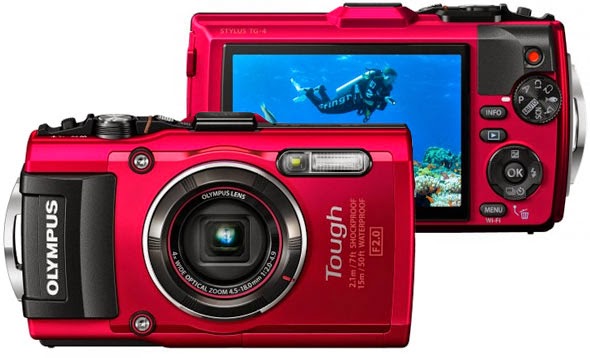
As for other factors and specs, the TG-4 borrows heavily from its predecessor. The body design and ruggedness specs remain the same. The Olympus TG-4 is able to withstand drops from 7 feet (2.1m) high, freezing temperatures down to 14°F (-10°C), crushing pressures of 220 pounds (100kgf), dusty conditions, and, of course, watery depths down to 50 feet (15m). The imaging sensor is tied to the same current-gen TruePic VII processor, which provides the same sensitivity range and burst-shooting performance of the earlier TG-3, that is to say: ISO 100 to 6,400 and full-res images bursts at five frames per second for as many as 100 frames.
In front of the same 16-megapixel 1/2.3-inch CMOS sensor is a versatile 4x optical zoom lens that provides a comfortable 25-100mm-equivalent focal length range and a nice, bright f/2.0 aperture at the wide end. The aperture narrows to f/4.9 at full telephoto. However, for low-light shooting and particularly in dimmer underwater environments — where a wide-angle perspective is very useful and often desired — the bright f/2.0 aperture is a much-welcomed feature. The camera features an Aperture Priority mode, but unlike your typical camera, the aperture adjustments on the TG-4 are not as finely grained, but rather a three-step system. You can choose from f/2.0, f/2.8 or f/8.0 at the wide angle, and from f/4.9, f/6.3 or f/18.0 at telephoto.

Like the TG-3 before it, the lens on the ‘4’ focuses to an impressively close 0.4 inches (1cm), and does so at 30 to 100mm equivalents, making for a very respectable macro performance. And to help combat blur from camera shake, Olympus has included mechanical, sensor shift-type image stabilization. There’s also a five-mode flash strobe to help brighten nearby subjects.
To further enhance the macro photography capabilities, there are a handful of macro-specific shooting modes in addition to the normal “Microscope Mode.” There is a Microscope Control Mode, which uses a digital zoom function to enable 1x, 2x, and 4x magnification ratios for increased macro effects. Furthermore, since macro photography introduces very narrow depths of field, the TG-4 has both an automatic focus stacking mode as well as a manual focus-bracketing mode to create macro shots with deep depths of field or ensure sharp macro photos.
The Olympus TG-4 shown here with the optional LED Light Guide. This simple ring attaches around the lens and redirects light from the on-board LED to function as a ring light for even close-up and macro photography.
Video recording capabilities remain unchanged from the TG-3. Video resolution tops out at 1920 x 1080 with both 60p and 30p frame rates available, with 720/30p HD video also offered. Standard videos are saved with H.264 compression in a .MOV container, however the TG-4 also supports high-speed and time-lapse movies, both of which use Motion JPEG compression in an AVI container. Time-lapse movies, which have a maximum resolution of 720p, can be as long as ten seconds, and play back at ten frames per second, for a total of up to 100 video frames. High-speed movies drop down in resolution to VGA (640 x 480 pixels) at 120 frames per second, or 320 x 240 resolution for 240 fps.
Images and movies are stored on Secure Digital cards, including higher-capacity SDHC and SDXC types. The Olympus Tough TG-4 uses the same LI-92B rechargeable lithium-ion as its predecessor, with battery life rated the same at 380 shots per charge. The battery is charged in-camera, via the included AC/USB adapter
The Olympus TG-4 shown here with the new Sport Holder CSCH-123.
Like its predecessor, the Olympus TG-4 is compatible with a growing system of accessories such as cases, float straps, an underwater housing, plus fisheye and telephoto conversion lenses, as well as the LG-1 LED light guide introduced with the TG-3. For additional underwater protection, the Underwater Case PT-056 (sold separately) increases the TG-4’s underwater depth rating to 45m (about 147 feet). A new accessory for this model is the Sport Holder CSCH-123, which can be used to quickly mount and de-mount the camera to a backpack strap or belt. The Sport Holder includes a carabineer and elastic shock cord to hold the camera and prevent drops and falls.

| Basic Specifications | |
|---|---|
| Full model name: | Olympus Tough TG-4 |
| Resolution: | 16.00 Megapixels |
| Sensor size: | 1/2.3 inch (6.2mm x 4.6mm) |
| Kit Lens: | 4.00x zoom (25-100mm eq.) |
| Viewfinder: | No / OLED |
| Native ISO: | 100 – 6400 |
| Extended ISO: | 100 – 6400 |
| Shutter: | 4 – 1/2000 |
| Max Aperture: | 2.0 |
| Dimensions: | 4.4 x 2.6 x 1.2 in. (112 x 66 x 31 mm) |
| Weight: | 8.7 oz (247 g) includes batteries |
| MSRP: | $380 |
| Availability: | 05/2015 |
| Manufacturer: | Olympus |
| Full specs: | Olympus TG-4 specifications |
Set to be available in May 2015, the Olympus TG-4 ships in black or red versions with a list price of US$379.99 (CAD$399.99), which is slightly higher than the US$350 list price of its predecessor.
(imaging-resource.com)



